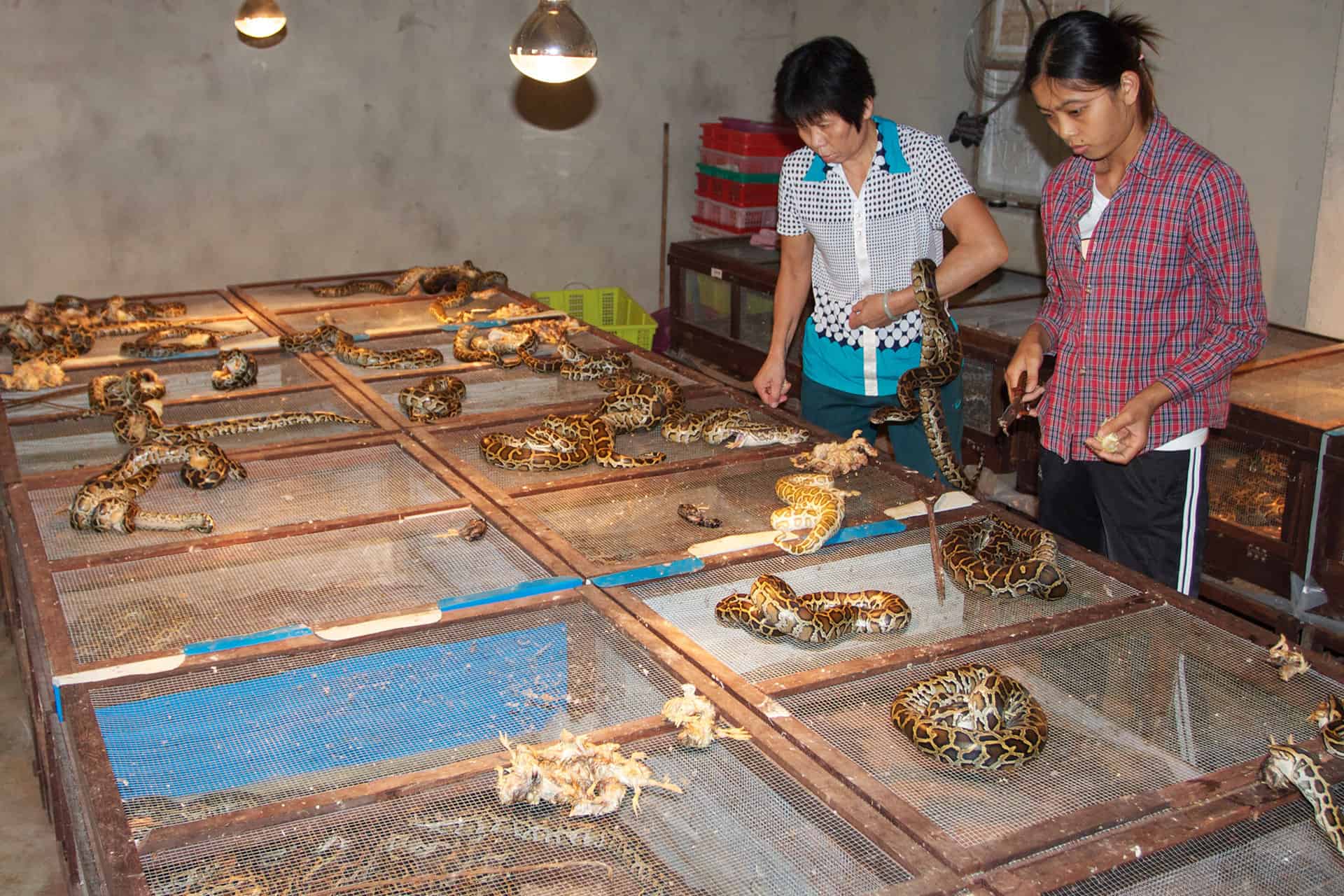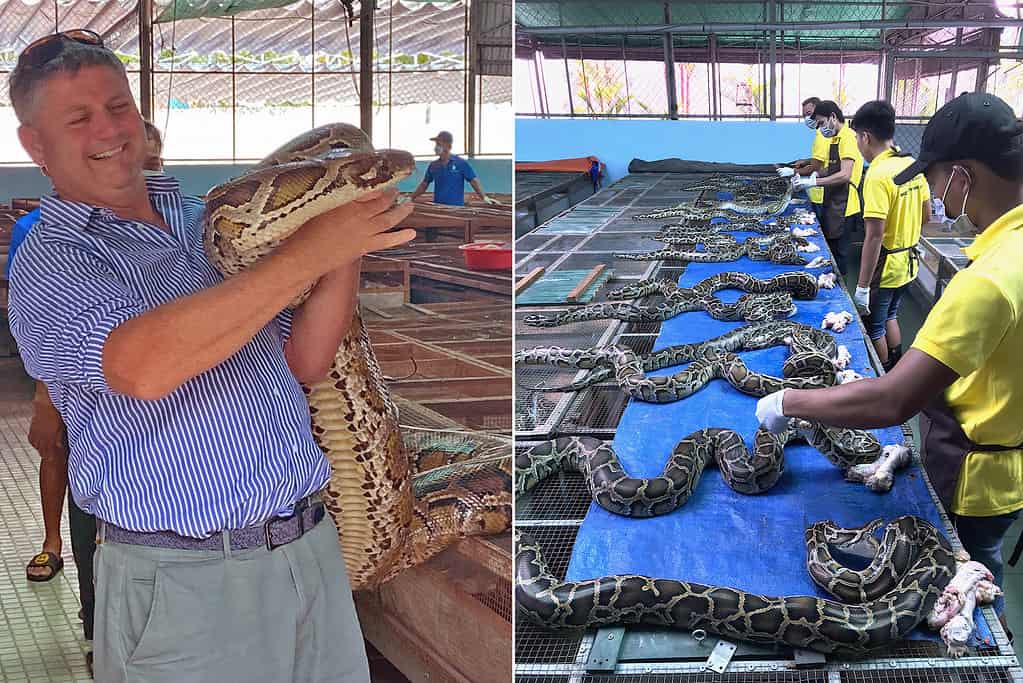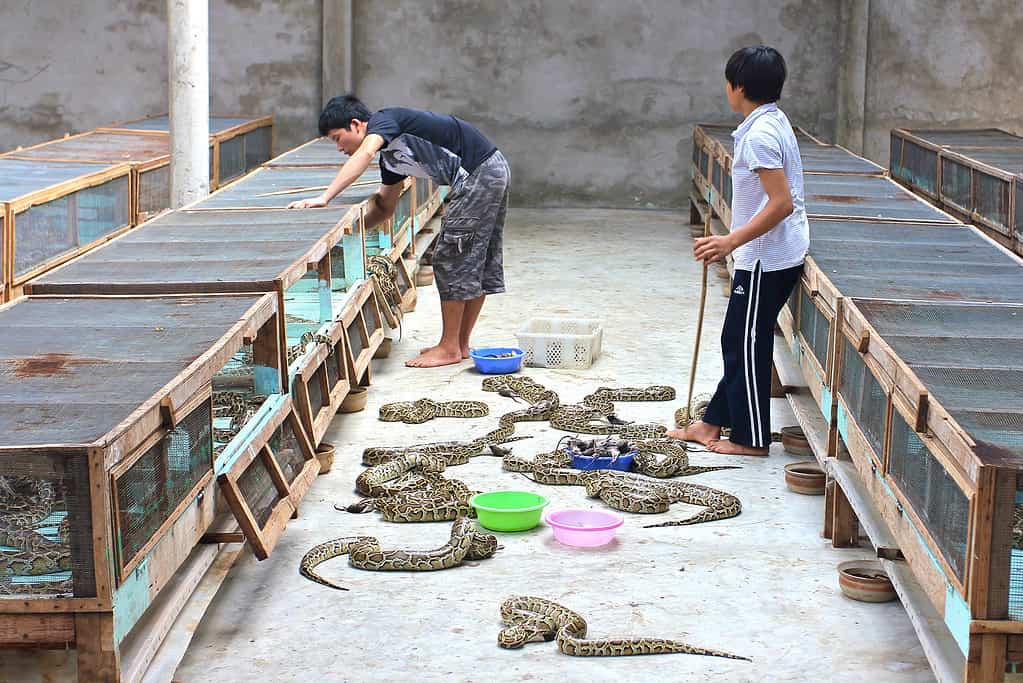The meat industry is responsible for 15 percent of the annual global greenhouse emissions, but not everybody is willing to switch to a plant-based diet. Is there a way to reduce the damage the meat industry is causing to the environment without giving up on meat? Well, it seems there might be.

A new study suggests that replacing chicken, pork, beef, and other traditional meats with python meat could make a huge difference. In fact, there are some active python farms in countries such as Vietnam, Indonesia, and Cambodia that are already doing this.
Conservation scientist Dr. Patrick Aust and his team have been studying such farms for the last 10 years. In their study, they propose that farming pythons for meat is much more sustainable than farming any other animal, including chickens.
“When it comes to pythons, they can produce high amounts of protein-rich meat for less feeding input. We don’t need all those thousands of square kilometers of cereal crops that are required to fuel the metabolism of warm-blooded animals. We can turn that cereal cropland back to natural habitats, resulting in far more effective capturing and storing of carbon dioxide,” Aust told ZME Science.
Python meat solves many problems
You might be surprised to hear that cattle farming alone contributes 10 percent of the global greenhouse gas emissions. Meanwhile, the waste from pig farms, results in land and water pollution on a large scale.

For instance, a 2022 report highlighting the impact of pig farms in Missouri reveals that each year, 244,000 gallons of pig urine, feces, and other waste from farms end up in the water bodies and land areas across the state. Poultry farms are no better. They release large amounts of greenhouse gases such as ammonia, nitrous oxide, and methane.
Moreover, “They are the biggest emitters of dust, microorganisms, and organic compounds (including pharmaceuticals) in manure, litter, dust, and air,” researchers of a 2020 study focusing on the environmental impact of poultry farms, note.
Pythons don’t produce methanogenic waste so the emissions resulting from farming them are significantly lower, compared to other animals, according to the study. Plus, unlike warm-blooded animals, which are very active and require a lot of carbohydrates to maintain their metabolism, for pythons, it’s all about making the most with as few resources as possible.
“Snakes require minimal water and can even live off the dew that settles on their scales in the morning. They need very little food and will eat rodents and other pests attacking food crops,” Dr. Daniel Natusch, lead study author and founder of People for Wildlife, said.
This is because their energy expenditure is very low. Mostly they are physically inactive and just lying down, and they also don’t need to spend energy to maintain their body temperature.
“This also makes them better converters of food, particularly the protein I’m talking about. In other words, they could take food and turn it into high-quality meat far more efficiently than chickens, pigs, or cows. Also, python meat has less than one percent saturated fats, that’s literally no fat.” Aust added.
Dr. Aust and his team have consumed python meat, but they have yet to compare its protein content to that of other meats. However, they assume one kilogram of python meat is likely to have equal or marginally higher protein amounts.
When it comes to waste, the digestive system of big snakes like pythons is powerful enough to digest even bones, producing minimal solid waste and almost no water. Moreover, over 80 percent of their body is usable, providing not only high-protein meat, but also other materials including leather.
Is python farming practical and scalable?
Pythons are large-bodied animals, they produce huge volumes of boneless meat, and they breed rapidly. Plus, a large number of pythons can be kept in vertical systems. So, no large landmass is required to set up a python farm, according to Aust.

A female python matures in three years and lays 50 to 100 eggs every year. Whereas a pig gives birth to 20 to 30 offspring, and a cow produces only one calf yearly.
A hen lays more eggs than a python but the meat production from them may be less than pythons because of the huge difference in the body weight of these animals.
For instance, an average commercially produced chicken weighs between two to four kilograms, but the weight of a single Burmese python can reach over 90 kg.
Another big advantage of python farming is that, unlike other animals, these reptiles can live on less food and resources. If the situation is so bad that a farm owner has to shut down his farm for some time, the animals can survive without any input.
“When food and water are not available they literally just shut down their system, atrophy their internal visceral organs, and just literally leave a tiny little pilot metabolic light on that just keeps the system ticking over,” Aust told ZME Science
This unique ability allows them to survive for months and even years without losing any body weight. Therefore, they are really useful in situations where farm owners are facing increasing volatility because of extreme climate events like droughts and floods or due to economic issues and pandemics.
Typically, when supply chains are disturbed due to such situations, a lot of the existing livestock systems struggle to maintain the animals. As a result, a large number of chickens and pigs are culled and destroyed as slaughterhouses won’t take them, and farm owners can’t continue to feed them.
“However, with Python farming, you can just shut down your farm put everything on the ice, and just wait for months or literally years. And then, you know, when the good times return, you can fire it up again and you’re back to running at full capacity with absolutely no impact on your livestock,” Aust said.
“So is python farming scalable and practical? I think the short answer is yes,” He added.
Challenges with python farming
Python meat may seem like a great alternative to traditional meat, but the chances of it becoming a mainstream food are still not very high.
Currently, its consumption is limited to a few poorer communities in Asia, Africa, and Latin America. People in rich countries, particularly in the West where most of the food-related research is done, are not even aware of this food option.
According to the study authors, this has also prevented the industry from receiving support from mainstream agricultural research and development investments.
“The industry has evolved very quickly but what happened is that the Python farms we see today are just modifications of existing pork and poultry systems. We haven’t reached a point where we are applying science and agricultural tech to these systems to try and optimize them,” Aust told ZME Science.
“You won’t see any big corporates investing in it because it’s so niche-specific at this point and that niche is let’s say for argument’s sake relatively poor parts of the world. You know it’s not a very common phenomenon in the West. But I think once people realize the potential, and those big investments come in, then we’ll see things start to change,” he added.
The study is published in the journal Scientific Reports.


